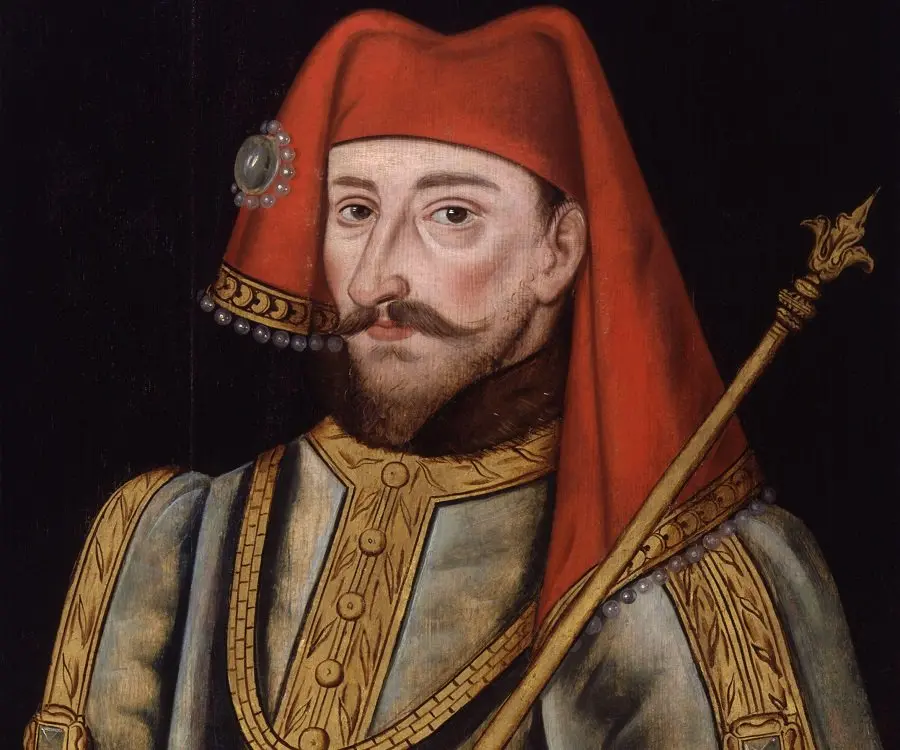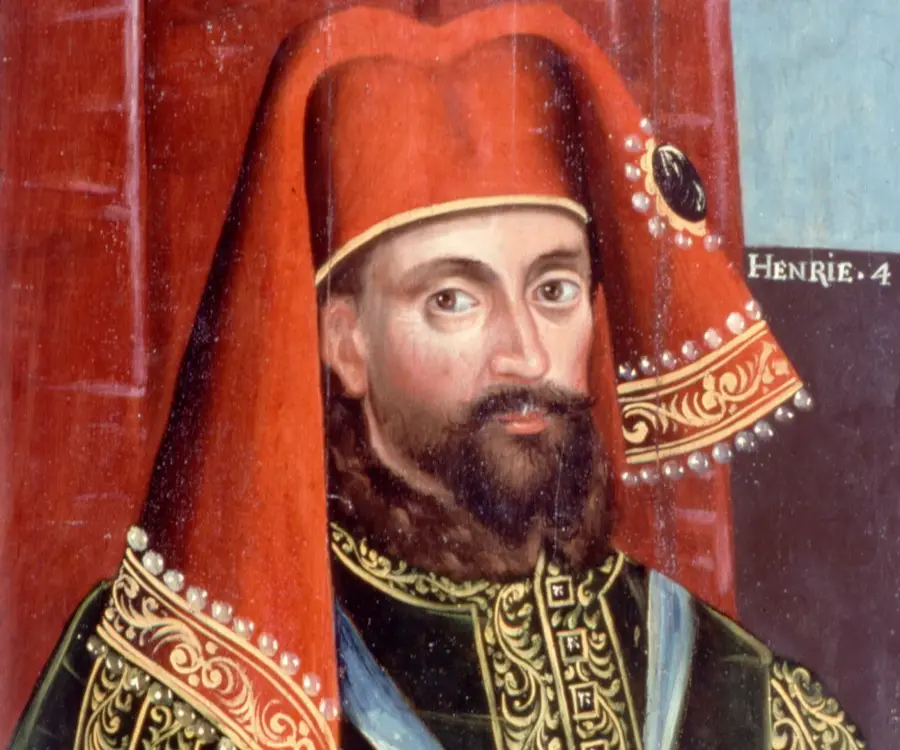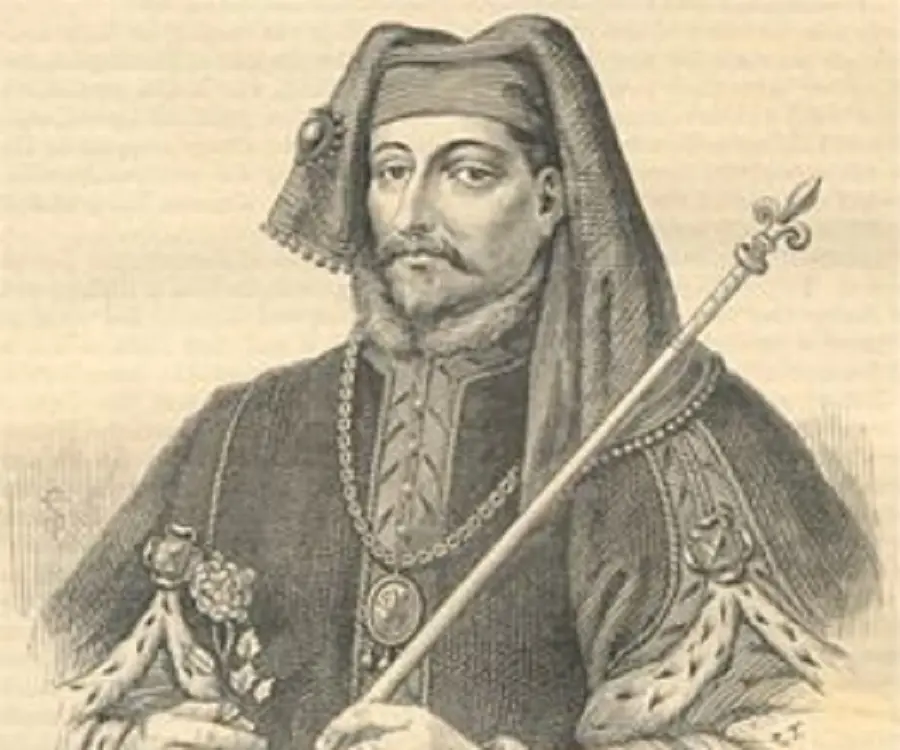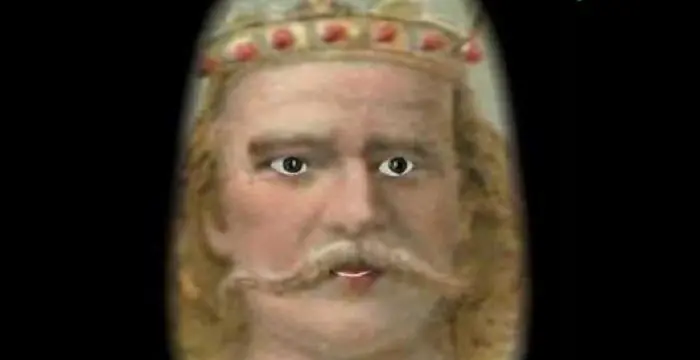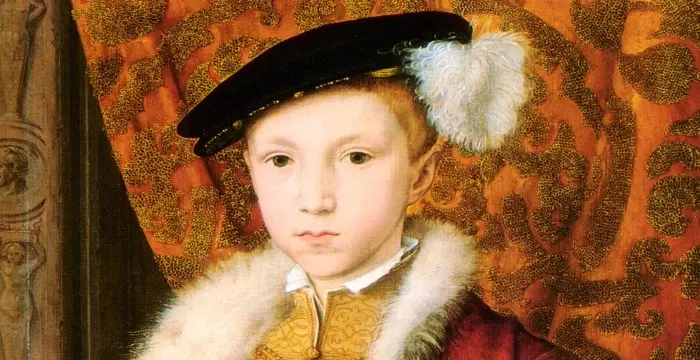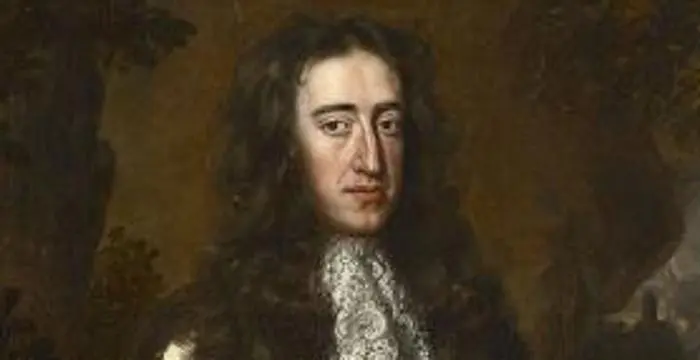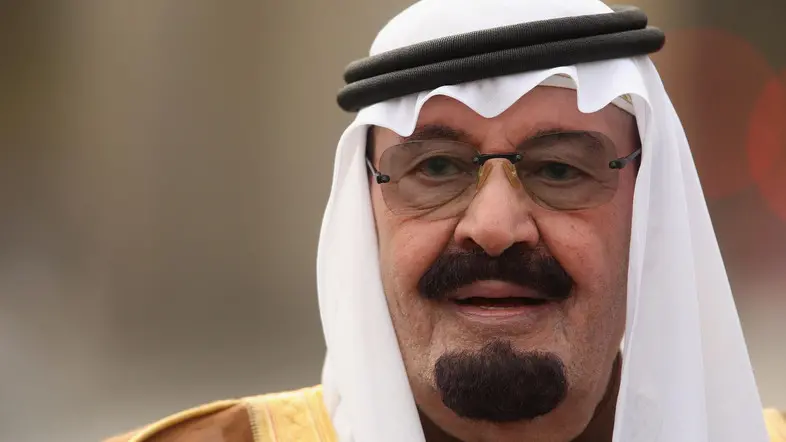
Henry IV of England - Emperors, Family and Facts
Henry IV of England's Personal Details
King Henry IV of England was the King of England and Lord of Ireland from 1399 to 1413
| Information | Detail |
|---|---|
| Birthday | April 15, 1367 |
| Died on | March 20, 1413 |
| Nationality | British |
| Famous | Historical Personalities, Emperors & Kings, Emperors, King of England, Kings |
| Spouses | Joan of Navarre, Mary de Bohun, Queen of England |
| Siblings | Philippa of Lancaster |
| Childrens | Henry V of England |
| Birth Place | Bolingbroke Castle |
| Gender | Male |
| Father | John of Gaunt |
| Mother | Blanche of Lancaster |
| Sun Sign | Aries |
| Born in | Bolingbroke Castle |
| Famous as | King of England |
| Died at Age | 45 |
// Famous Emperors
Sundiata Keita
Sundiata Keita was the founder of the Mali Empire in West Africa. This biography profiles his childhood, early life, struggles, founding of empire, rule, administration, achievements and also gives some fun facts.
Ashoka
Ashoka was the third emperor of the Mauryan Dynasty and ruled almost the entire Indian subcontinent. This biography profiles his childhood, life, reign, achievements and timeline
Murad IV
Murad IV was one of the mighty Sultans in the history of the Ottoman Empire. This biography profiles his childhood, family, accession, rule, administration and timeline.
Henry IV of England's photo
Who is Henry IV of England?
King Henry IV of England was the King of England and Lord of Ireland from 1399 to 1413. He was the first monarch of the House of Lancaster and came to the throne by deposing his childhood playmate and first cousin, King Richard II of England. His father John of Gaunt was the third surviving son of King Edward III of England. This made him the grandson of the reigning king, but far removed from the throne. However, his father wielded considerable influence in the English court and had amassed great wealth not only by marriage to Henry’s mother Blanche of Lancashire, the heiress to Henry of Grosmont, 1st Duke of Lancashire, but also by other means. Henry himself was brought up along with young Prince Richard. Under such circumstances, it was natural that he too would yearn for power and authority. However, his path to power was not easy. He was sent to exile by the reigning king Richard II in 1397 and deprived of his patrimony on his father’s death. Henry retaliated by deposing Richard II and declaring himself king. On his death, his son Henry V succeeded the throne.
// Famous Kings
Sundiata Keita
Sundiata Keita was the founder of the Mali Empire in West Africa. This biography profiles his childhood, early life, struggles, founding of empire, rule, administration, achievements and also gives some fun facts.
Ashoka
Ashoka was the third emperor of the Mauryan Dynasty and ruled almost the entire Indian subcontinent. This biography profiles his childhood, life, reign, achievements and timeline
Murad IV
Murad IV was one of the mighty Sultans in the history of the Ottoman Empire. This biography profiles his childhood, family, accession, rule, administration and timeline.
Childhood & Early Life
King Henry IV of England was born on April 15, 1367 at Bolingbroke Castle in Lincolnshire, England, to John of Gaunt and Blanche of Lancashire. The couple had six children, out of which Henry was born fifth. He was also their only surviving son.
Other than his own siblings, Henry had few more half brothers and sisters from his father’s subsequent marriages and also from his father’s liaison with other women. He had more or less good relation with them.
Because he was born at Bolingbroke, Henry was initially known as Henry the Bolingbroke. As a child, he was the playmate of his first cousin Richard Bordeaux, who upon the death of their grandfather became King Richard II of England.
In 1377, both the princes were admitted to the Order of the Garter. On 16 July 1377, ten year old Richard was crowned king. On succeeding the throne, the king made his playmate the Earl of Derby. Like the king, Henry was also aged ten and so he lived in his father’s shadow. John of Gaunt also played an important part in the governance of the country.
In 1386, Gaunt left for an expedition to Spain. In 1387, Henry joined the rebellion by the Lord of Appellants and forced the king to accept their dominance in the council. When the king regained his power, he punished other rebellious barons, but spared Henry. That he did not actually forgive Henry was proven later.
In 1390, Henry went on a crusade to Lithuania with three hundred fellow knights and had limited success. Again in 1392, he went on another crusade to Prussia. Next in 1392-1393, he went to Jerusalem. Although he vowed to free the city from the infidel he was unable to keep it.
In 1397, Henry was made Duke of Hereford. However, the very next year in 1398, Henry was exiled by the king because of his quarrel with Thomas de Mowbray, 1st Duke of Norfolk. Mowbray was also exiled for life. Henry went to Paris and stayed there until his return to England in June 1399.
Return From Exile
John of Gaunt died unexpectedly on February 3, 1399. King Richard II immediately cancelled the grants that would have allowed Henry to inherit his vast property. After some contemplation, Henry contacted Thomas Arundel, former Archbishop of Canterbury. He too had lost his position because he had sided with the Lords of Appellants.
With the guidance from Arundel, Henry returned to England when King Richard II was away on a campaign in Ireland. The king had taken most of his loyal knights with him. Therefore, when Henry landed at Ravenspurn towards the end of June 1399 there was no resistance from any side.
Very soon the Duke of York garnered support of other nobilities, who had misgiving about the king. Duke of York, who in the absence of the King, was acting as the Keeper of the Realm, also sided with him. Soon, Henry was powerful enough to declare himself king.
On August 12, 1399, Earl of Northumberland met King Richard II at Conway and negotiated on behalf of Henry. The king agreed to abdicate if his life was spared. He was then brought back to London and imprisoned at the Tower of London, where he died under mysterious circumstances.
The Reign
With the abdication of King Richard II on September 30, 1399, Henry Bolingbroke was coronated as King Henry IV of England. However, the major part of his reign was spent in consolidating his position, and quelling rebellions.
In December 1399, there was an attempt to capture the new king at Windsor during the feast of Epiphany and restore Richard II to the throne. However, it failed because the King was forewarned and he never turned up at the venue. Instead, he had an army raised in London. By January 1400, all the ringleaders were captured and executed.
The Glyndŵr Rising in Wales was another rebellion that plagued his rule. It started in 1400 in protest against the oppressive English rule. Up to 1405 King Henry IV of England led a number of unsuccessful campaigns into Wales, but could not quell it. It subsided in 1415 when his son King Henry V of England adopted a more pacifying approach to its people.
However, the gravest challenge came from Henry Percy, the 1st Earl of Northumberland and his family. They made three attempts to overthrow King, but were defeated each time.
The Battle of Shrewsbury fought in 1403 was the most severe of them. The rebellion was led by Henry Percy’s son Henry Hotspur Percy. The king’s army killed Hotspur and captured other leaders. They were later publicly hanged and their heads were put on display. The Earl of Northumberland fled to Scotland.
In 1405, Archbishop of York Richard le Scrope led another failed rebellion against the King. While Scorpe was killed, the Earl fled to Scotland once again. The third and final battle took place at Bramham Moor near Wetherby in 1408. The Earl of Northumberland was killed and with that the uprising ended.
However, to fund such expeditions, King Henry IV of England had to rely on parliamentary grants. From 1401 to 1406 the parliament accused the king of fiscal mismanagement time after time. Ultimately, it acquired supervisory power over royal expenditures as well as appointments.
Very soon, the king’s health began to deteriorate and with that began power struggle within the court. While Thomas Arundel, Archbishop of Canterbury dominated the court proceedings in the beginning, by 1410, he was ousted by the opposing group led by Prince Henry.
The relation between the king and his son Prince Henry began to deteriorate over France, where a rebellion had erupted. While the king wanted to ally with the ruling faction, the prince preferred to wage war against them in alliance with his Burgundy friends.
In 1412, King Henry IV became totally incapacitated and Prince Henry took over the administration. However, the relation between the father and the son remained tense until the king’s death in 1413.
Personal Life
King Henry IV of England married Mary the Bohun in June 1380. The couple had six children among which Prince Henry, who later became King Henry V of England, was the eldest surviving son. Mary died in 1394, much before Henry IV came to the throne. Therefore, she was never the queen.
The King Henry IV of England next married Joanna of Navarre, the daughter of Charles d'Évreux, King of Navarre, on February 1403. This marriage remained issueless though Joanna had four daughters from her previous marriage to John V of Brittany.
At the end of his life, King Henry IV began to suffer from some ‘grave’ illness. He had a disfiguring skin disease, which might have been leprosy or psoriasis. Besides from 1405 onwards, he began to suffer from ‘acute attacks’, which might have been epilepsy or some kind of cardio vascular disease.
King Henry IV of England died on March 20, 1413. In accordance of his wish, the king was buried at Canterbury Cathedral adjacent to the shrine of St. Thomas Becket. His eldest son Prince Henry succeeded him as King Henry V of England.
Trivia
It was prophesied that the King Henry IV would pass away at Jerusalem. Everybody, including the king, thought that he would die during the crusade. However, he breathed his last in Jerusalem Chamber, built in previous century as the abbot’s house, inside the Westminster Abbey in London.
// Famous King of England
Harold Godwinson
Harold Godwinson was an Anglo Saxon King of England in the 11th Century. Check out this biography to know about his birthday, childhood, family life, achievements and fun facts about him.
Edward VI of England
Edward VI served as the King of England, from 1547 until his death in 1553. Check out this biography to learn in details about his life, his works as a king and timeline
William III of England
William III was the stadtholder of the main provinces of the Dutch Republic and the king of England, Ireland, and Scotland (King William II of Scotland). Check out this biography to know more about his childhood, family, life history, etc.
Henry IV of England biography timelines
- // 15th Apr 1367King Henry IV of England was born on April 15, 1367 at Bolingbroke Castle in Lincolnshire, England, to John of Gaunt and Blanche of Lancashire. The couple had six children, out of which Henry was born fifth. He was also their only surviving son.
- // 16th Jul 1377In 1377, both the princes were admitted to the Order of the Garter. On 16 July 1377, ten year old Richard was crowned king. On succeeding the throne, the king made his playmate the Earl of Derby. Like the king, Henry was also aged ten and so he lived in his father’s shadow. John of Gaunt also played an important part in the governance of the country.
- // Jun 1380 To 1394King Henry IV of England married Mary the Bohun in June 1380. The couple had six children among which Prince Henry, who later became King Henry V of England, was the eldest surviving son. Mary died in 1394, much before Henry IV came to the throne. Therefore, she was never the queen.
- // 1386 To 1387In 1386, Gaunt left for an expedition to Spain. In 1387, Henry joined the rebellion by the Lord of Appellants and forced the king to accept their dominance in the council. When the king regained his power, he punished other rebellious barons, but spared Henry. That he did not actually forgive Henry was proven later.
- // 3rd Feb 1399John of Gaunt died unexpectedly on February 3, 1399. King Richard II immediately cancelled the grants that would have allowed Henry to inherit his vast property. After some contemplation, Henry contacted Thomas Arundel, former Archbishop of Canterbury. He too had lost his position because he had sided with the Lords of Appellants.
- // Jun 1399With the guidance from Arundel, Henry returned to England when King Richard II was away on a campaign in Ireland. The king had taken most of his loyal knights with him. Therefore, when Henry landed at Ravenspurn towards the end of June 1399 there was no resistance from any side.
- // 12th Aug 1399On August 12, 1399, Earl of Northumberland met King Richard II at Conway and negotiated on behalf of Henry. The king agreed to abdicate if his life was spared. He was then brought back to London and imprisoned at the Tower of London, where he died under mysterious circumstances.
- // 30th Sep 1399With the abdication of King Richard II on September 30, 1399, Henry Bolingbroke was coronated as King Henry IV of England. However, the major part of his reign was spent in consolidating his position, and quelling rebellions.
- // Dec 1399 To Jan 1400In December 1399, there was an attempt to capture the new king at Windsor during the feast of Epiphany and restore Richard II to the throne. However, it failed because the King was forewarned and he never turned up at the venue. Instead, he had an army raised in London. By January 1400, all the ringleaders were captured and executed.
- // 1401 To 1406However, to fund such expeditions, King Henry IV of England had to rely on parliamentary grants. From 1401 to 1406 the parliament accused the king of fiscal mismanagement time after time. Ultimately, it acquired supervisory power over royal expenditures as well as appointments.
- // 1403The Battle of Shrewsbury fought in 1403 was the most severe of them. The rebellion was led by Henry Percy’s son Henry Hotspur Percy. The king’s army killed Hotspur and captured other leaders. They were later publicly hanged and their heads were put on display. The Earl of Northumberland fled to Scotland.
- // Feb 1403The King Henry IV of England next married Joanna of Navarre, the daughter of Charles d'Évreux, King of Navarre, on February 1403. This marriage remained issueless though Joanna had four daughters from her previous marriage to John V of Brittany.
- // 1405 To 1408In 1405, Archbishop of York Richard le Scrope led another failed rebellion against the King. While Scorpe was killed, the Earl fled to Scotland once again. The third and final battle took place at Bramham Moor near Wetherby in 1408. The Earl of Northumberland was killed and with that the uprising ended.
- // 1405At the end of his life, King Henry IV began to suffer from some ‘grave’ illness. He had a disfiguring skin disease, which might have been leprosy or psoriasis. Besides from 1405 onwards, he began to suffer from ‘acute attacks’, which might have been epilepsy or some kind of cardio vascular disease.
- // 1410Very soon, the king’s health began to deteriorate and with that began power struggle within the court. While Thomas Arundel, Archbishop of Canterbury dominated the court proceedings in the beginning, by 1410, he was ousted by the opposing group led by Prince Henry.
- // 1412 To 1413In 1412, King Henry IV became totally incapacitated and Prince Henry took over the administration. However, the relation between the father and the son remained tense until the king’s death in 1413.
- // 20th Mar 1413King Henry IV of England died on March 20, 1413. In accordance of his wish, the king was buried at Canterbury Cathedral adjacent to the shrine of St. Thomas Becket. His eldest son Prince Henry succeeded him as King Henry V of England.
// Famous Emperors & Kings
Sundiata Keita
Sundiata Keita was the founder of the Mali Empire in West Africa. This biography profiles his childhood, early life, struggles, founding of empire, rule, administration, achievements and also gives some fun facts.
Ashoka
Ashoka was the third emperor of the Mauryan Dynasty and ruled almost the entire Indian subcontinent. This biography profiles his childhood, life, reign, achievements and timeline
Murad IV
Murad IV was one of the mighty Sultans in the history of the Ottoman Empire. This biography profiles his childhood, family, accession, rule, administration and timeline.
Xerxes I
Xerxes I (Xerxes the Great) was the fourth and the most famous king of the Archaemenid dynasty of Persia. This biography profiles his childhood, family, personal life, life history, achievements, campaigns, administration, death and other facts.
Sargon of Akkad
Sargon of Akkad, also called ‘Sargon the Great’, ‘Sarru-Kan’ and ‘Shar-Gani-Sharri’, was the founder and first king of the Akkadian Empire. This biography profiles his childhood, life, rule, administration, timeline, and gives some fun facts.
Abdullah of Saudi Arabia
Abdullah bin Abdulaziz Al Saud was the King of Saudi Arabia from 2005 to 2015 and the third wealthiest head of state in the world. Find more facts about his life, childhood and timeline.
Henry IV of England's FAQ
What is Henry IV of England birthday?
Henry IV of England was born at 1367-04-15
When was Henry IV of England died?
Henry IV of England was died at 1413-03-20
Where was Henry IV of England died?
Henry IV of England was died in Westminster
Which age was Henry IV of England died?
Henry IV of England was died at age 45
Where is Henry IV of England's birth place?
Henry IV of England was born in Bolingbroke Castle
What is Henry IV of England nationalities?
Henry IV of England's nationalities is British
Who is Henry IV of England spouses?
Henry IV of England's spouses is Joan of Navarre, Mary de Bohun, Queen of England
Who is Henry IV of England siblings?
Henry IV of England's siblings is Philippa of Lancaster
Who is Henry IV of England childrens?
Henry IV of England's childrens is Henry V of England
Who is Henry IV of England's father?
Henry IV of England's father is John of Gaunt
Who is Henry IV of England's mother?
Henry IV of England's mother is Blanche of Lancaster
What is Henry IV of England's sun sign?
Henry IV of England is Aries
How famous is Henry IV of England?
Henry IV of England is famouse as King of England



